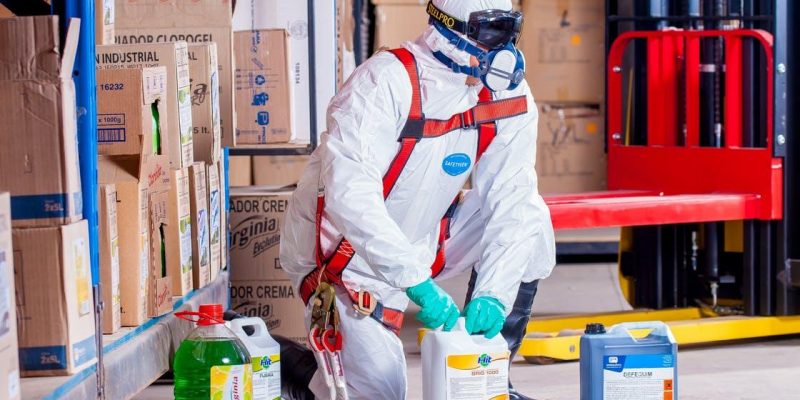Establishing and maintaining a safe workplace should be the utmost priority of every employer under OSHA regulations. While some organizations already have a solid grip on the intricacies of the OHS, unfortunately, others still fall behind.
Employee wellness is crucial for every business – improving health and safety conditions enhances production, bolsters morale, and diminishes the rate of accidents. But, on the flip side, organizations that overlook safety are at risk of many liabilities.
According to the International Labor Organization, nearly 340 million accidents occur, and around 160 million employees fall victim to work-related illnesses every year globally. Additionally, private industry employers recorded 2.7 million non-fatal workplace illnesses and injuries in the US in 2020. Fall and slip accidents, unsafe working conditions, and overexertion acted as catalysts in the loss of production days.
While injuries and accidents may occur despite the best preventative measures and safety steps, organizations won’t have to contend with an additional charge of negligence if such things happen. Therefore, regardless of its safety records, every business should pay heed and carefully consider workplace health and safety at every tier.
And although each organization indeed has its distinct requirements. Here we’ve compiled some basic measures and efforts employers should implement to promote proactive safety work culture and create an environment focused on employee health.
Keep the work environment clean
Commercial entities of various kinds are susceptible to pest and termite pressures, and this, in turn, poses serious health risks. Combating these pests, which are keen on penetrating the work environment, is an uphill struggle. Therefore, hiring a commercial pest control company makes sense to keep a tight rein on pest issues.
Trained professionals can restrict pest activity, treat the affected areas, and identify risks. They can further educate the employees about actions that can curb pest activity. So, it’s best to enlist Google’s help and Visit Our Website to learn more about solutions tailored to different pest control needs. This way, you can protect your equipment and employees from health hazards.
Besides, organizations should keep everything in hygiene and sterile conditions, from the coffee maker in break rooms and alarms to forklifts. To prevent tripping accidents, hallways, staircases, and emergency exit routes should remain devoid of debris and tangled chords.
Use labels and signs for safety hazards
Before coming up with a safety plan, organizations should first identify and understand various safety hazards present in the workplace. For example, some sources of danger are temporary, such as spills, making the entrances and workplace areas extremely slippery, and inadequate railings.
In contrast, permanent workplace hazards include sharp tools, high noise levels, mechanical problems, ergonomics, and poisonous chemicals. Therefore, ensure to put up labels and signs for every source of danger, either temporary or permanent, to prevent injuries.
Bulletin boards and color codes are an excellent idea to raise awareness about safety hazards. Place posters that disseminate knowledge about lock-out tag-out and machine guarding. Likewise, organizations should leverage digital signage to spread crucial safety information and messages. This communication platform can come in handy in emergencies to forewarn workers not to use their cellphones in a particular area or notify them about new safety rules and regulations.
Provide employees with safety gear and PPE
We all have become well-acquainted with the term medical PPE (Personal Protective Equipment) for the past two years. However, PPE isn’t only about masks, face shields, and filter respirators. Instead, it’s primarily anything that keeps employees safe during work.
PPE is a safety gear that reduces the potential risks of hazards and injuries betiding over an individual. It may include helmets, fire-retardant clothes, eye protection, earplugs, cover gears, harnesses, and goggles.
The type of personal protective equipment workers need is contingent upon the industry’s needs. For instance, masks attached with double-ply panels are best for healthcare workers. However, food facilities should provide antibacterial garments to keep their employees safe.
Also, proper footwear is indispensable for workers, no matter which industry. Therefore, businesses should encourage workers to wear non-slip and weather-appropriate shoes in the workplace.
Provide safety training
Accidents and injuries never occur at a predicted time; thus, employees should possess proper knowledge and training to handle such events even before they occur. Organizations should provide workers access to extensive and standardized training.
At the bare minimum, organizations should guarantee every employee has completed their training, specifically if their jobs involve risks of potential injuries. Workers must know how to perform the responsibilities mentioned in the job description, such as dealing with hazardous chemicals and working with heavy machinery.
Safety protocols and training shouldn’t merely concentrate on lectures. Instead, OSHA suggests encompassing hands-on activities to learn how to tackle workplace hazards. For instance, emergency procedure drills, fire safety, computer ergonomics, and health and safety protocols should be a part of comprehensive training.
Collaborate with health and safety specialists
It can be challenging for businesses to determine where to begin with employee safety measures. Fortunately, numerous occupational safety and health experts are out there to help organizations raise the safety levels within the premises.
These professionals help businesses gain valuable insights into workplace hazards and injury prevention. Occupational clinicians inspect the workplace and examine the procedures employees follow to execute their job duties.
Not only this, but these highly-trained individuals also perform data analysis, review the organization’s safety policies, and check if they adhere to the industry safety laws. Businesses can also leverage their services to enhance ergonomic conditions and develop training programs that address common potential hazards.
Furthermore, organizations that wish to level up their workplace safety game can appoint health and safety representatives. This way, workers can trustingly share their concerns with safety reps, which, in turn, will act as mediators between senior management and employees.
Host regular safety meetings
Once organizations have implemented all practices and measures to build a bullet-proof safety protocol, what should they do next to ensure workplace safety stays active? Hold meetings consistently.
Create a safety committee that comprises members appertaining to various departments, from top executives to low-rank employees. The committee should hold meetings every once a month or two and keep the other workers and senior management abreast of the latest safety policies. This way, businesses can brace for any unforeseen circumstances.
Final Words
Every business has a legal obligation to implement preventive steps in the workplace to keep employees safe and healthy. Not only is it the ethically correct measure to take. It also fosters a more resilient work environment.
Identifying foreseeable safety hazards and imparting knowledge of safety procedures, precautions, and expectations are necessary for a positive culture. It’s also indispensable to train employees, provide emergency exits, inspect the equipment, and ensure open communication for the safety of everyone around.
An employee-centric work culture that accentuates the importance of safety creates a conducive environment for productivity and job satisfaction, a win-win situation for both. Therefore, get on the right track and establish corrective measures to nurture a safety-oriented work environment where each employee stands to gain.




















